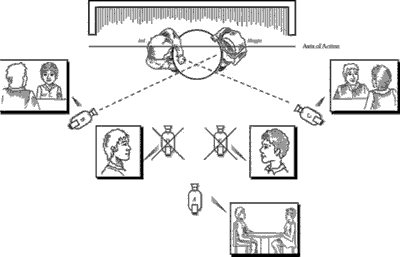A weakness of out film is we filmed two of the shots on the wrong side, this may confuse the audience as they character is on the wrong side from where they should be looking, but we fixed this issue when we were editing it.
We made this film in adobe. We found that inputting the clips and cutting them was rather easy. This was straight forward as all you had to do was drag the clip that you wanted to use down the video bar. The difficulties that we faced was trying to flip the characters round so that they were on the correct side. In the end we managed to find an effect that flipped the character round to what ever angle you wanted, after we found it and used it a few times we got the hang of it. Another thing that was quite challenging was trying to zoom into the face, this was very hard as there were no indications on how to do it or where we could find the tool. Overall i would say we got the gist of things in the end but will need a bit more practise using this piece of software in the future.





